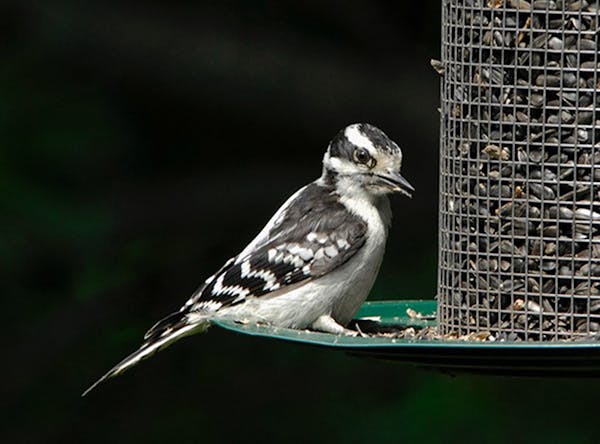Where have all my feeder birds gone?
If you're asking that question, you've got company. Among others, I speak from experience.
First, birds can be fickle, their loyalty thin soup. They'll love you today, leave you tomorrow. The term used in a research paper I found is wander. Their home territory can be as large as 12 acres. They wander off. Nothing personal.
If your feeders are attracting birds hatched nearby, numbers can decline as winter progresses. Mortality of first-year birds can reach from 40 to 60%.
This fall we had five chickadees using our feeders. In late January, there were three.
Chickadees as a species have seasonal movement tendencies. They avoid nasty weather by short sojourns south, migration of a type.
Why do some of the wanderers return to the original feeder — your feeder — and others don't? Birds that nest within the 12-acre territory are more likely to return.
Chickadees nest in our yard and in the nesting boxes that I maintain at a nearby golf course. Boxes I place at wooded edges are more likely to attract chickadees.
The mix of resident birds — breeders — and nonresidents at the studied feeders broke 50/50.
Type of food did not seem to be a factor in return of birds to an original feeding location, according to one study. If your birds have disappeared, apparently it's not related to the menu you offer.
Chickadees maintain a body temperature of 107 degrees. They must eat their weight in food daily. If you don't see them it's not because they're skipping a meal.
The birds also could be using food that they have cached. Chickadees are among the bird species that hide food to be eaten later.
A study in New York state indicated that most chickadees remain in their breeding area for the winter season as long as food supplies are adequate. Researchers believed that chickadees are "site-tenacious" between Nov. 1 and March 1.
Another study in New York found mid-January to be departure point for chickadees moving from winter feeding grounds to nesting territory. Low-status chickadees sometimes move early to establish territory. First come, first served.
A Project Birdwatch report in New York in 1987 indicated a 50% drop in chickadee populations in mid-January at feeders of project participants.
Adequate food can be influenced by the natural nutrient carrying capacity of the habitat area used by your feeder birds. Feeders provide chickadees with about 20% of their necessary daily energy requirement, according to a study in Wisconsin.
House finches are another species common at our feeders. This species has a tendency for seasonal-affected migration.
A number of house finches, a species native to California, were moved to Long Island in the 1940s. It took 20 years, but the change in climate created tendencies for short-term migration south.
House finches have since dispersed widely across the country, taking flexible movement determined by circumstance with them. That includes our finches.
Other species with flexible migration habits include American robins and Eastern bluebirds. Both species eat berries. Once the berries are gone, so are the birds. (Exception: I have seen robins eating dead minnows behind a bait shop.)
All the species using your feeders behave in ways similar to chickadees — territorial loyalty, energy needs, caching, reaction to weather, food available elsewhere.
As I said, it's nothing personal.
Lifelong birder Jim Williams can be reached at woodduck38@gmail.com.
Singing, ceremonies and straw hats: Olympics opening ceremony in Tahiti centers Polynesian culture

Three 101-year-old friends recall fond memories in 1940s Alexandria
Celine Dion makes musical comeback at Paris Olympics with Eiffel Tower serenade

